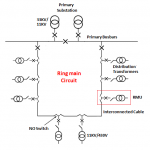What is BESS?
BESS is an electrochemical energy storage system.
Battery Energy Storage Systems are rechargeable batteries that can store energy from different sources, such as solar and wind power, and discharge it when needed.
BESS consists of one or more batteries, used to balance the electric grid, provide backup power, and improve grid stability.
Types of Energy Storage Systems:
Mechanical, thermal, electrochemical, electrical, and chemical storage systems are among the several energy storage technologies that are available, as illustrated below:

The pumped Hydro Energy Storage System is explained in detail here. PSH
Why are Energy Storage Systems Required?
When a significant amount of variable and intermittent renewable energy is added to the energy mix, grid stability and a consistent electricity supply are challenged.
The problem with renewable energy sources is that their availability varies depending on the season, climate, time of year, and location. The available energy from renewable sources can be stored using Energy Storage Systems (ESS), which can then be utilized during the day’s busiest periods.
Energy storage has several advantages, including reducing generation variability in renewable energy sources, enhancing grid stability, facilitating energy/peak shifting, offering ancillary support services, facilitating greater integration of renewable energy, lowering peak deficit and peak tariffs, lowering carbon emissions, deferring transmission and distribution capital expenditures, and enabling energy arbitrage, among other things.
Benefits of BESS used in power plants:
If demand falls below the Minimum Environmental Load (MEL) of the power plant, it can also absorb and store the excess power. By charging the integrated BESS during periods of lower demand, power plants can operate longer within this power range. As a result, their average specific fuel consumption could be lower.
Energy is released from the battery storage system during peak demand times, keeping costs down and ensuring electricity flows, thereby reducing the need to purchase more expensive energy units.
Additionally, BESS is utilized to reduce the grid synchronization time for conventional power facilities of various kinds, including gas turbine peaking units and classic steam plants.
Primary components and working of BESS:
Battery:
The battery is the fundamental element of an electrical energy storage system.
Nowadays, the most widely employed storage technology for large-scale facilities that help electrical grids maintain a consistent supply of renewable energy is lithium-ion batteries, which are used in electric cars and cell phones.
Battery modules containing individual low-voltage battery cells arranged in racks within either a module or a container enclosure. The battery cell converts chemical energy into electrical energy. The batteries are connected in series and parallel to provide the required capacity.

Battery management system (BMS):
The battery management system (BMS) handles cell charging, balancing, and health monitoring, complemented by a microcontroller providing system control and communication.
The BMS data is internally collected and used to monitor and maintain an optimal level of charge, preventing battery overcharging and helping to prolong the system’s lifecycle.
Power conversion/conditioning system (PCS):
The power conversion system is designed to convert the direct current produced by batteries or the battery system into alternating current that can be used for power consumption on the grid.
During off-peak times, the PCS takes the energy from the grid to store in the BESS. In essence, the PCS’s main function is to convert the power between the energy storage system and the grid, and vice versa. It accomplishes that by offering a bi-directional flow from DC-AC and AC-DC.
Intelligent battery software utilizes algorithms to coordinate energy production, and computerized control systems are employed to determine when to store energy or release it to the grid.
Energy management system (EMS):
The EMS coordinates the BMS, inverters, and other components of the battery energy system by collecting and analyzing data used to manage and optimize the overall system performance.
Safety systems:
A BESS will contain cooling, heating, and air conditioning systems, as well as smoke detection, fire suppression, and a temperature control system, depending on system functionality and operating conditions.
BESS Types:
1. Front of The Meter (FTM):
FTM BESS systems are either directly connected to the utility grid or owned and operated by electric utility companies. These systems are typically integrated with generation facilities, distribution networks, or transmission systems. Their primary roles are to assist electric utility companies by providing arbitrage, conventional generation support, capacity firming, upstream disturbance limitation, frequency management, voltage support, black start, and distribution power quality.

2 . Behind The Meter (BTM):
BTM BESS is installed on the consumer’s side of the utility service meter. These systems are common in commercial, industrial, and residential settings. The primary objective of BTM BESS is to optimize energy consumption for consumers and reduce electricity bills by integrating renewable energy, Peak shaving, demand charge management, Uninterrupted power supply, Power quality management, Time-of-use energy cost management, and EV fast charging infrastructure.



![Directional Over Current Relay [67]:](https://electengmaterials.com/wp-content/uploads/2019/07/Directional-Relay-Characteristic-150x150.png)